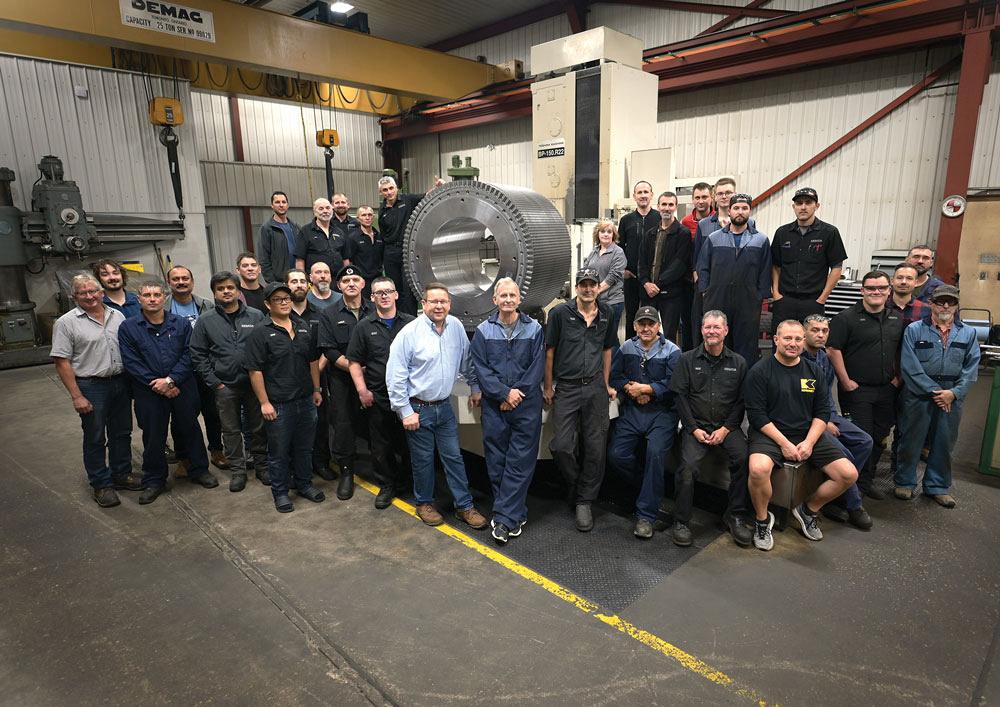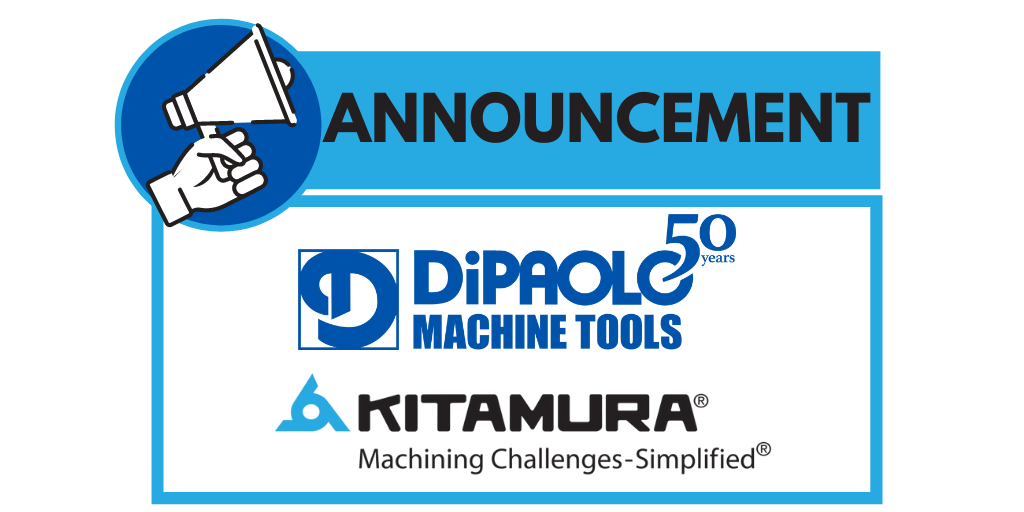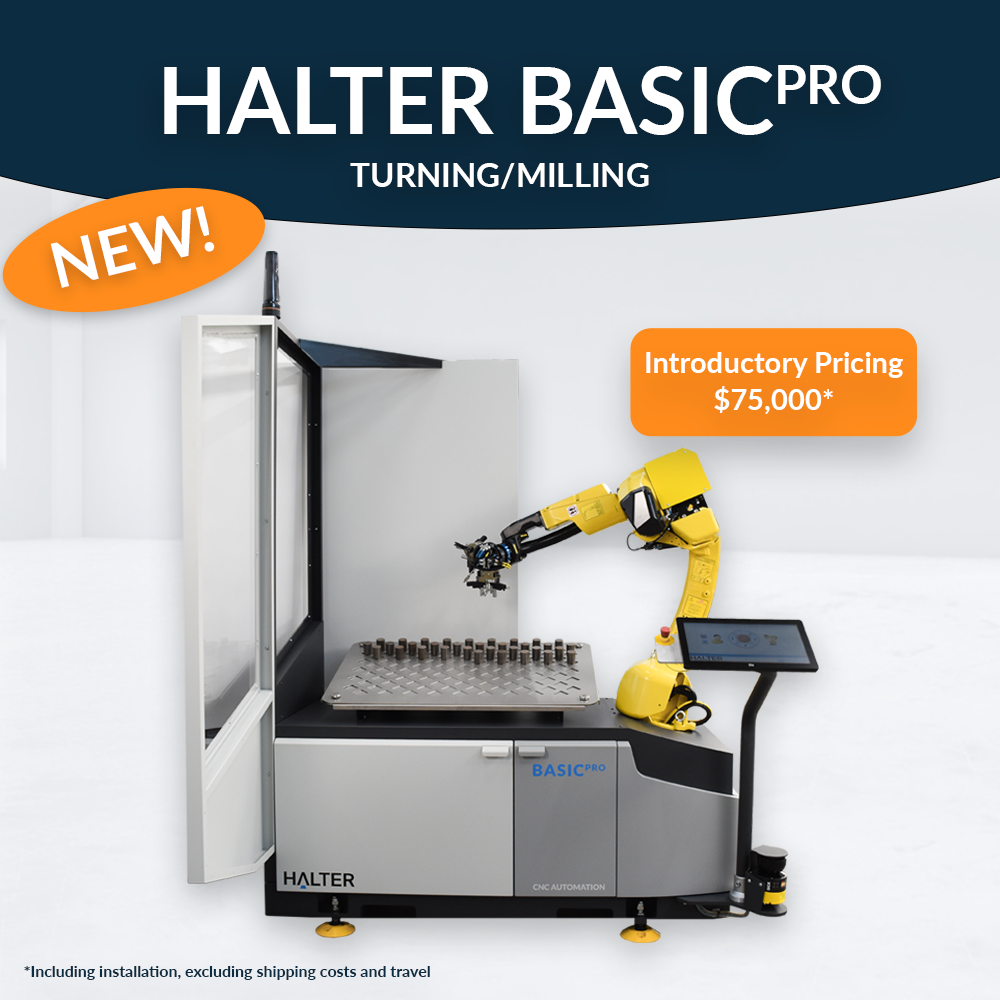Industry 4.0: Digitalization Gets a Grip on the Manufacturing Industry
Digitalization leads to changes in all parts of society. These changes are sometimes disruptive. For example, think about the way in which we currently book hotel stays using internet platforms. What happened to travel agencies? Or how companies such as Facebook and Google offer very smart services from advertisers that just so happen to match what you have been searching the web for. Or the app that collates the news that you are interested in every morning. These are examples that everyone is familiar with in their everyday life. This digitalization will also change the manufacturing industry, as Industry 4.0 begins with the digitalization and connection of machinery, devices and administrative systems in companies. The impact will ultimately extend much further than this.
Every manufacturing company will be faced with Industry 4.0. Anyone who capitalizes on it in good time can make maximum use of the benefits it has to offer. But how do you get started with Industry 4.0?
The digital transformation involves more than just technology. The transformation consists of technology and business models, entrepreneurial culture, leadership and performance management.
~ Tomas Hedenborgh, CEO of Fastems
WHAT DOES INDUSTRY 4.0 STAND FOR?
The term Industry 4.0 is used to indicate the 4th Industrial Revolution.
The invention of the steam engine marked the start of the First Industrial Revolution. This invention allowed manual labour to be mechanized.
The invention of electricity marked the start of the Second Industrial Revolution, where mass production arose. Thanks to the assembly line, Ford was able to turn the car into a mass-produced product.
The Third Industrial Revolution occurred more recently, but is still almost half a century old. In the 1970s, IT and electronics led to machinery and production processes that were controlled by computers. CAD/CAM software marked the first step towards digital production in the 1990s.
And now the manufacturing industry is in the early stages of Industry 4.0; a new wave of innovation that is growing as more and more machines and devices are connected to one another. The first step is connected factories. By exchanging data between machines, devices and IT systems, many new opportunities are created in the production world and beyond. By connecting machines and systems to one another, it is also possible to connect production capacity to the end customer. This could, for example, be an OEM. Consumers will also increasingly receive a direct line to production in the future. Will the consumer have the production planning controls at his/her fingertips?
Industry 4.0 ensures that the chains in the manufacturing industry are closed. From product design to realization and use: everything is controlled from a single database. By closing the chain, we can continuously carry out optimization.
~ Freek Marks, Head of the Digital Factory Division at Siemens Netherlands
DEVELOPMENTS CONTINUE APACE
If you look back at the four industrial revolutions, it is clear that they are occurring apace. The time span between major breakthroughs is becoming shorter. Industry 4.0 is fueling this trend. The current 4th Industrial Revolution is no longer developing linearly, like the 3rd Industrial Revolution. This time it involves an exponential development. This means that the time entrepreneurs have to adapt is getting shorter and shorter. Now, delaying participation means that in a few years’ time, you will probably find yourself at a disadvantage that it will be too late to rectify. Another important difference between the 4th Industrial Revolution and the previous three is that the internet makes production capacity accessible to a larger number of groups. In the 3D printing world, they call this the democratization of the manufacturing industry. Whereas in the past, innovations were mainly reserved for companies that had the means to invest in capital goods such as machinery, today every start-up has immediate access to production capacity via the online production platforms. Just like OEMs. This offers opportunities for manufacturing companies that keep pace with this trend.
On the supply side, many industries are seeing the emergence of new technologies that create entirely new methods for meeting existing needs. These existing value chains are increasingly faced with disruptive changes.
~ Klaus Schwab, Founder and CEO of the World Economic Forum
DIGITALIZATION BEGAN IN THE CONSUMER WORLD
To date, it is mainly consumers who have benefited from the industrial revolutions. Mass production has made countless consumer products cheaper. The emergence of electronics and IT has not only brought about completely new products but also new services. In fact, the fourth revolution has been going on for consumers for some time now. The internet has brought about disruptive changes to many sectors here. Watching Netflix with an app on your smartphone now replaces the drive to the video store that was common practice at the end of the last century. The smart hydro meter replaces the monthly meter reading. These innovations have had an enormous impact. A large number of new companies are emerging, but names that dominated their sector for a long time are also disappearing, simply because they did not keep pace with the trend. Kodak is one such company, due to the fact that it underestimated the potential of digital photography. Nokia is another of these companies, simply because it did not see the potential in the smartphone. No company wants to be the next one on the list, does it?
Dassault Systèmes introduces Marketplace Make, where software for the outsourcer provides the link to the potential supplier. “We are hoping to become the Amazon of engineers.
~ Gian Paolo Bassi, CEO of SolidWorks
THE IMPACT OF PLATFORMS
Industry 4.0 is having an impact on the manufacturing industry. Digitalization optimizes the often long, complex and poorly transparent supply chains. Internet platforms unite automated supply and demand. This is done in a way that ensures the best fit. After all, why submit an application to a party that is not able to meet all the specifications? Or a party whose production capacity is so full that it is impossible for them to meet the delivery deadline?
In the future, outsourcers and OEMs will see where production capacity is available in the supply chain via digital platforms. And they will claim a part of this on terms that they largely dictate. The pull economy is coming: where demand will drive production. This is very precise. These internet platforms already exist for the manufacturing industry. This is no longer a thing of the distant future, but the reality of today.
WORLD ECONOMIC FORUM: FOUR PHASES IN INDUSTRY 4.0
The World Economic Forum distinguishes between four phases in Industry 4.0. The first phase involves automation. This enables manufacturing companies to improve the efficiency of their machines directly. Operational Efficiency. Automation ensures that employees are approached more based on their talents and are thus used less for repetitive, tedious tasks. Besides higher output, automation also improves quality. This is because operations are carried out in the same way each time, independently of the operator. And secondly, because the process operator has much more time to work on optimizing both the quality and process.
Companies that have optimized their production capacity through automation can take the step to the second phase, which involves developing new products and services. For example, think of pay-per-use. The first machine manufacturer to charge customers per spindle hour is already operating. You should also think about the use of data, which can also take place internally. Data provide valuable information about the production process and input for improvement steps.
The third phase of Industry 4.0 in the eyes of the World Economic Forum is the outcome economy. We no longer purchase products such as light fittings and instead buy the service: sufficient lighting whenever required during the contract period. In the machining industry, this can mean that an outsourcer buys a production slot from a supplier.
The fourth phase will be that of autonomous systems and the pull economy: consumers who want a certain product personalize it online and set an autonomous production process and perhaps even a complete supply chain in motion with their order.
The crux of Industry 4.0 is knowing what is happening in your factory. In order for this to be the case, you must always have access to useful data. These data help you understand what is going well in production and what is not.
~ Rick Hoffman, CEO EIMCO (USA), initial user of the robot cell Halter CNC Automation
THE INDUSTRY 4.0 JOURNEY
One thing is certain and that is that we are growing towards a pull economy. When you order a meal via Takeaway, you set up a complete supply chain, from the cook to the bicycle courier who rings your doorbell half an hour later. Why shouldn’t this be possible in the manufacturing industry as well? Nobody knows when we will reach that point in the manufacturing industry. It may occur more quickly in one market than in another. After all, one product may lend itself better to this than another. One thing that is for certain is that the business in the manufacturing industry will shift to online platforms, whether public or private, within a specific supply chain.
By automating the loading of machines, our output is three times higher. This makes me cheaper than low-wage countries and gives my operators more time to focus more closely on further quality improvement.”
~ Alfred Reimer, CEO/owner of Alfred Reimer GmbH
TAKE THE FIRST STEP: PICK THE LOW HANGING FRUIT
We have already ascertained that Industry 4.0 is developing exponentially. Waiting is risky. However, many companies are not even talking about Industry 4.0 yet because they are too busy making money today. They believe that Industry 4.0 is vague and not very concrete. However, they do not realize that automation, operational efficiency, is the first step that any company can take. In a study in 2017, McKinsey discovered that 51% of all working hours in the US industry can be automated with the technology already available today. 51% – more than half of all hours. In the machining industry, companies complain about the lack of well-trained professionals. After all, good CNC cutters and turners are scarce. The lack of professionals is holding back companies’ growth. But nowadays you can automate roughly half of the hours that your current staff work. This potential is not yet being sufficiently exploited. Greater productivity does not require employees to work harder, but to work smarter.
THE FOUR PHASES IN INDUSTRY 4.0
1. OPERATIONAL EFFICIENCY
- Optimal Utilization
- Operational cost reduction
- Employee Productivity
2. NEW PRODUCTS & SERVICES
- Pay-per-use
- Software based services
- Data adds value
3. ECONOMIC RESULT
- Pay-per-result
- New prohibitions on Ecosystems
- Platform
4. AUTONOMOUS DEMAND ECONOMY
- Demand-driven production
- End-to-end
- Automation
- Minimization
- Raw materials & waste
One CNC operator carries out programming (preferably using CAM software), optimizes processes and devises new milling strategies in order to work faster, achieve better quality or extend tool life. A good CNC operator should not spend hours clamping material and removing workpieces from the machine. However, this is often still the case today in machining companies. They find the term Industry 4.0 vague, because they are too busy focusing on the ultimate goal. In the meantime, they forget to pick the low hanging fruit, the immediate return they could get from automation.
MAKE THE INDUSTRY 4.0 JOURNEY TOGETHER WITH CNC AUTOMATION
CNC Automation is taking its customers along with it on the journey that is Industry 4.0. Because that is Industry 4.0: a journey where the starting point is known; automation to increase the output of existing machinery. The ultimate goal, the pull economy, is what we will be working together towards over the coming years.
The HALTER systems enable us to increase production immediately without additional personnel. CNC automation – combined with the high operational reliability of HALTER – ensures that we can even carry out production at night if the situation so requires. The Doosa machines, in combination with the HALTER systems, are the most productive machines in our machine pool.
~ Nigel Eames, Production Manager, FB Chain
The HALTER Load Assistant is a low-threshold solution for entering the industry of 4.0 today, with immediate return and thus more profit:
- The machines operate for more hours because they are loaded automatically. The person-hours factor per product decreases drastically, which reduces the cost price, even for smaller series
- The spindle efficiency also increases during the day by eliminating the need for the CNC operator to stand at the machine at all times
- The LoadAssistant makes production more flexible. At peak production times, CNC machines are available at night and at weekends, with minimal human input
- Expansion of the machinery – because demand is increasing – does not automatically mean an increase in the number of employees. This makes production easier to scale
- Every CNC operator learns to program a LoadAssistant and to fix any faults within a few hours
- The changeover times for another product are extremely short. The LoadAssistant is ready for another product in less than five minutes.
- Even very small series can now be produced unmanned. It pays to carry out automation with the LoadAssistant, even with as few as ten pieces
EN ROUTE TO A FULLY-FLEDGED INDUSTRY 4.0 FACTORY WITH HALTER CNC AUTOMATION
With the LoadAssistant, you take the first step towards achieving a smart factory, in which people work smarter instead of harder and therefore achieve a greater output. DiPaolo works with HALTER and other leading brands to help manufacturers leverage CNC Automation’s automation solutions. Helping manufacturers to be ready for the future, both in terms of hardware and, above all, software. The R&D team is already working on the solutions for the second and third phase of Industry 4.0 outlined by the World Economic Forum, such as predictive maintenance, data-driven production, pay-per-use, et cetera. By choosing DiPaolo, you are choosing a partner who will support you over the coming years in maximizing the immediate benefits of the 4th Industrial Revolution and will help you in the transition to a smart industry company. A company that is ready for the future!


